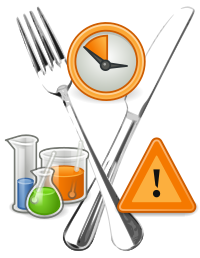
Photo from wikipedia
Food security is significantly affected by the mass production of agricultural produce and goods, the growing number of imported foods, and new eating and consumption habits. These changed circumstances bring… Click to show full abstract
Food security is significantly affected by the mass production of agricultural produce and goods, the growing number of imported foods, and new eating and consumption habits. These changed circumstances bring food safety issues arising from food spoilage to the fore, making food safety control essential. Simple and fast screening methods have been developed to detect pathogens and biomarkers indicating the freshness of food for safety. In addition to the traditional, sequential, chemical analytical and microbiological methods, fast, highly sensitive, automated methods suitable for serial tests have appeared. At the same time, biosensor research is also developing dynamically worldwide, both in terms of the analytes to be determined and the technical toolkit. Consequently, the rapid development of biosensors, including electrochemical-based biosensors, has led to significant advantages in the quantitative detection and screening of food contaminants. These techniques show great specificity for the biomarkers tested and provide adequate analytical accuracy even in complex food matrices. In our review article, we summarize, in separate chapters, the electrochemical biosensors developed for the most important food groups and the food safety issues they can ensure, with particular respect to meat and fish products, milk and dairy products, as well as alcoholic and non-alcoholic beverages.
Journal Title: Biosensors
Year Published: 2023
Link to full text (if available)
Share on Social Media: Sign Up to like & get
recommendations!